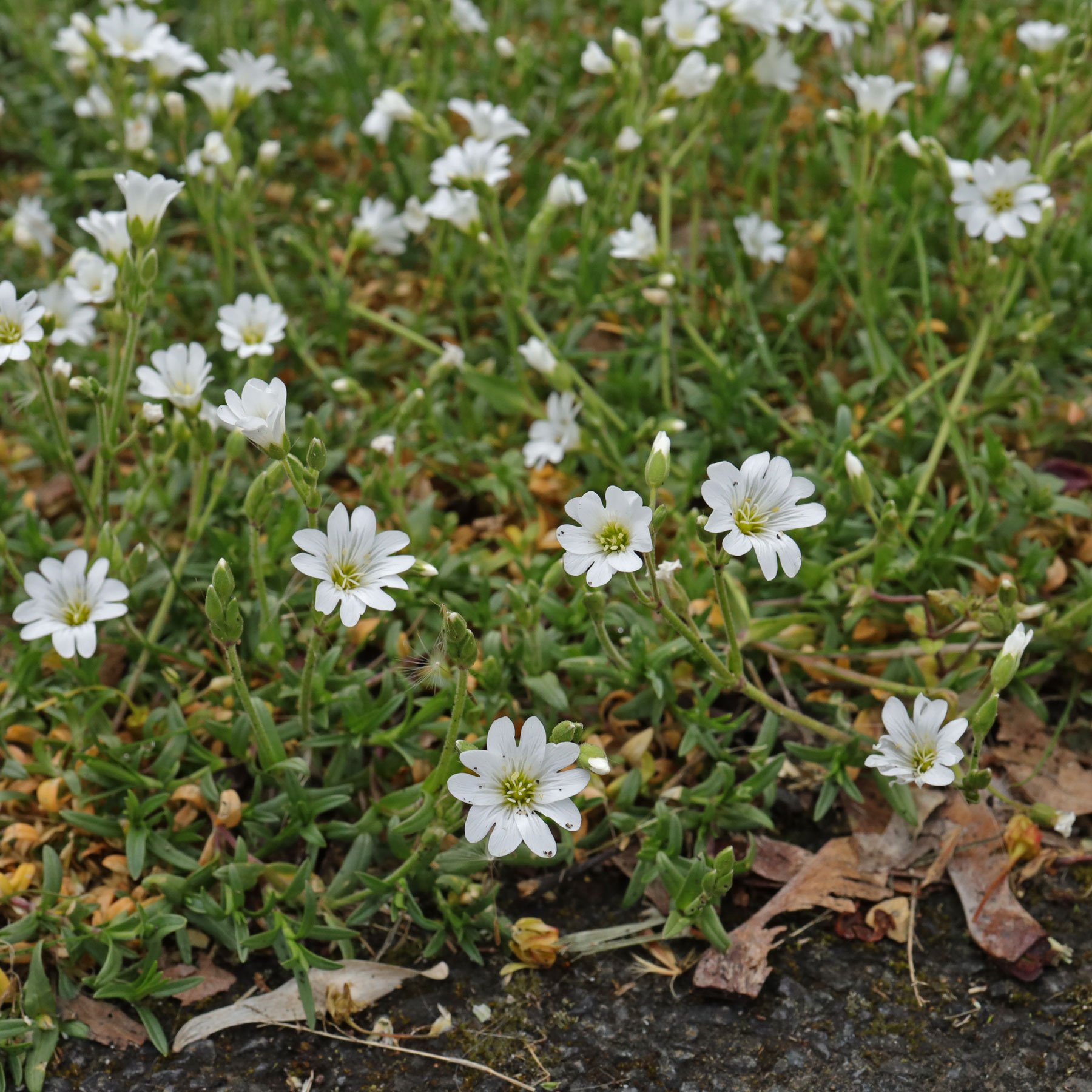
Field MouseEar (Cerastium arvense ssp. arvense)
Description. Tufted, often mat-forming perennial herb with opposite leaves and showy white flowers, to 50 cm tall. [2] Leaves narrow, 1-nerved, 1 to 3 cm long. [3] Inflorescences open cymose, bracteate, short-pubescent, [4] with 3 to 5 flowers. [3] Flowers 5-merous, regular; sepals 5, distinct; petals 5, bilobed, [5] stamens 10 [2]; styles 5.

Cerastium arvense (field chickweed) Go Botany
Cerastium arvense is a species of flowering plant in the pink family known by the common names field mouse-ear and field chickweed. It is a widespread species, occurring throughout Europe and North America, as well as parts of South America. It is a variable species. There are several subspecies, but the number and defining characteristics are.
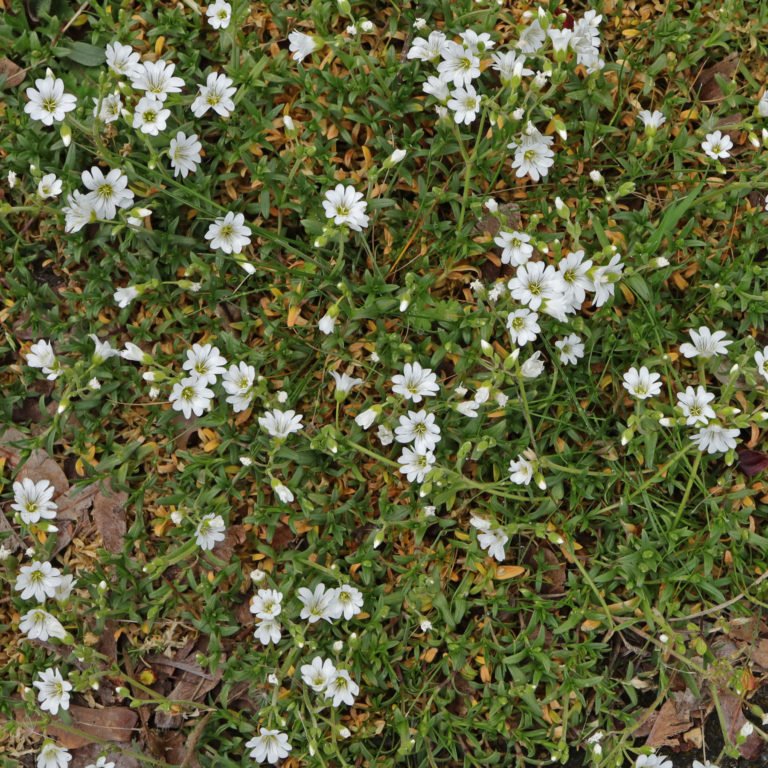
Gewöchnliches AckerHornkraut (Cerastium arvense ssp. arvense)
Cerastium arvense, commonly known as field chickweed, meadow chickweed or field mouse-ear, is a multi-stemmed herbaceous perennial. It grows in a variety of different forms, ranging from (1) strongly rhizomatous (taproot absent), long-creeping, mat-forming plants to (2) tap-rooted (sometimes shortly rhizomatous), clumping, and more upright plants.

Nature Cerastium arvense
Find help & information on Cerastium arvense &s;Compactum&s; from the RHS
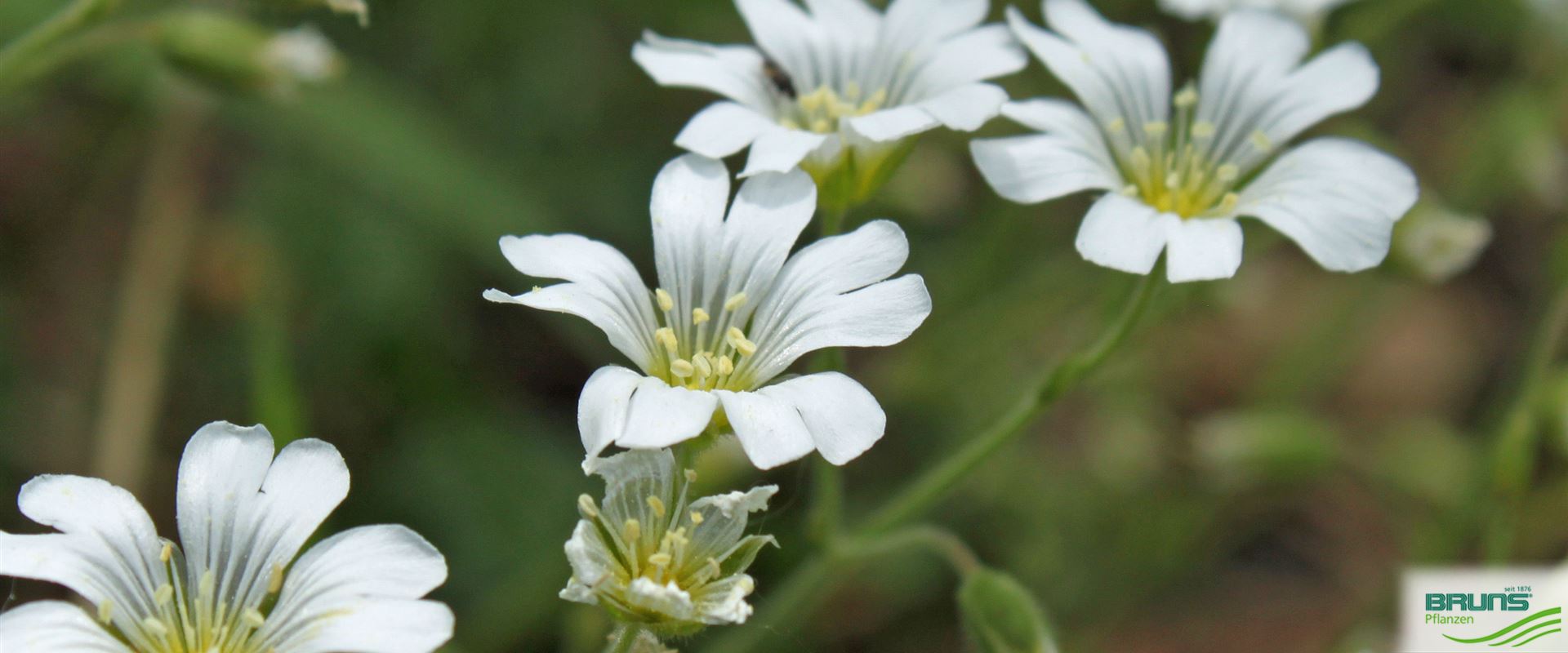
Cerastium arvense AckerHornkraut von Bruns Pflanzen
The Cerastium alpinum-C. arcticum complex (Caryophyllaceae): Numerical analyses of morphological variation and a taxonomic revision of C. arcticum Lange s.l. Taxon 49: 189-216. Good, D. A. 1984. Revision of the Mexican and Central American species of Cerastium. Rhodora 86: 339-379. Hultén, E. 1956.
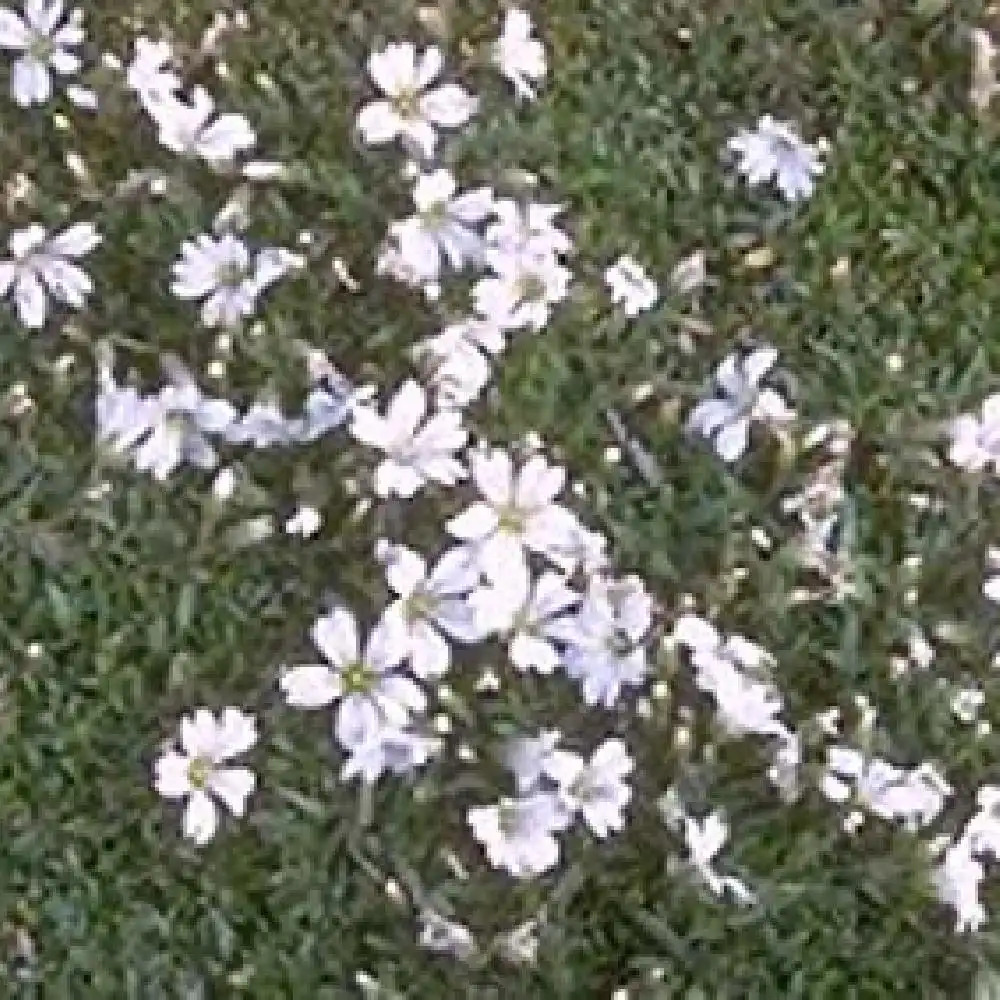
CERASTIUM arvense Corbeille d'argent Céraiste des champs pépinières Lepage
Free Shipping Available. Buy Cerastium Plants on ebay. Money Back Guarantee!

AckerHornkraut Cerastium arvense Beschreibung Steckbrief Systematik
Cerastium arvense is a species of flowering plant in the pink family known by the common names field mouse-ear and field chickweed. It is a widespread species, occurring throughout Europe and North America, as well as parts of South America. It is a variable species. There are several subspecies, but the number and defining characteristics are disputed.

Cerastium arvense
Field chickweed ( Cerastium arvense) is in the pink family (Caryophyllaceae), which is a group of about 3,000 species worldwide, with many of them being cultivated ornamentals. The carnation ( Dianthus caryophyllus) is perhaps the best known member of the pink family.

Cerastium arvense (Caryophyllaceae) image 73458 at PhytoImages.siu.edu
Fruit is a narrowly cylindric, slightly curved capsule ¼ to ½ inch long, longer than the sepals, with 10 minute teeth around the tip. Inside are golden brown seeds less than 1 mm long. Two subspecies of Cerastium arvense are found in Minnesota that look nearly identical. Subspecies is native and is characterized by: a taproot or short.
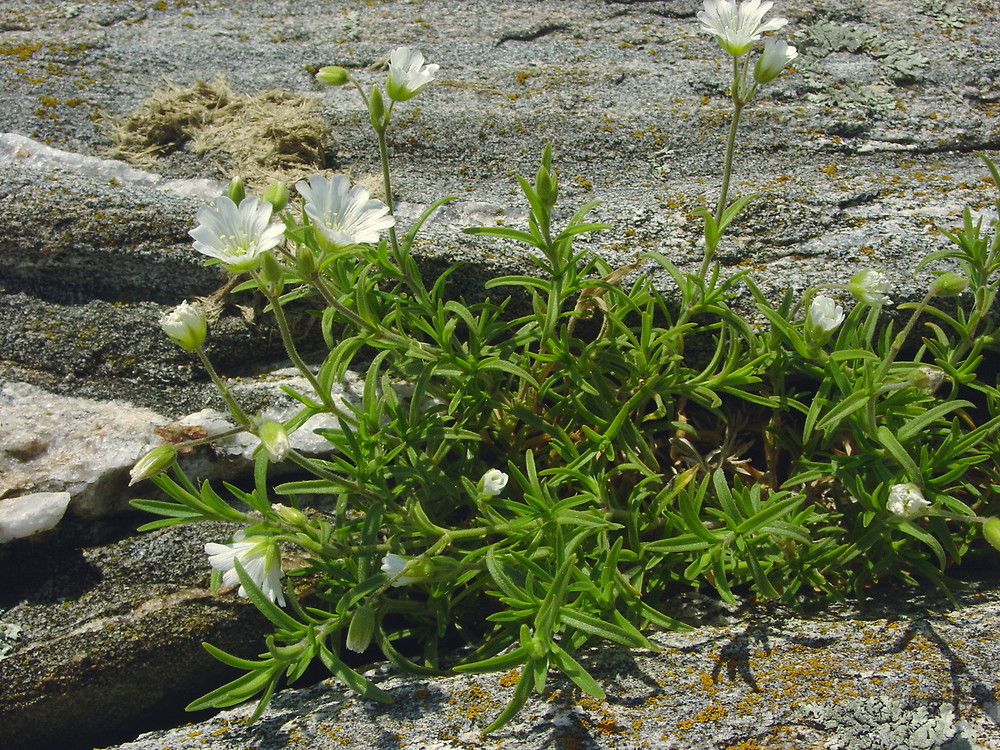
Cerastium arvense (field chickweed) Go Botany
North American Cerastium arvense Linnaeus: Taxonomy, reproductive system and evolution. Phyton (Horn) 35: 169-187. Provided by: .Flora of North America @ efloras.org; Source: [. Flora Helvetica - Illustrierte Flora der Schweiz Morphology. Stängel aufrecht oder aufsteigend, kurz abstehend oder rückwärts anliegend behaart, oft auch drüsig..

Cerastium arvense L'Erbario di Raffaele
Cerastium arvense L. First published in Sp. Pl.: 438 (1753) This species is accepted The native range of this species is Europe to Russian Far East and Central Asia, NW. Africa. It is a subshrub and grows primarily in the temperate biome. It is used to treat unspecified medicinal disorders and as a medicine.
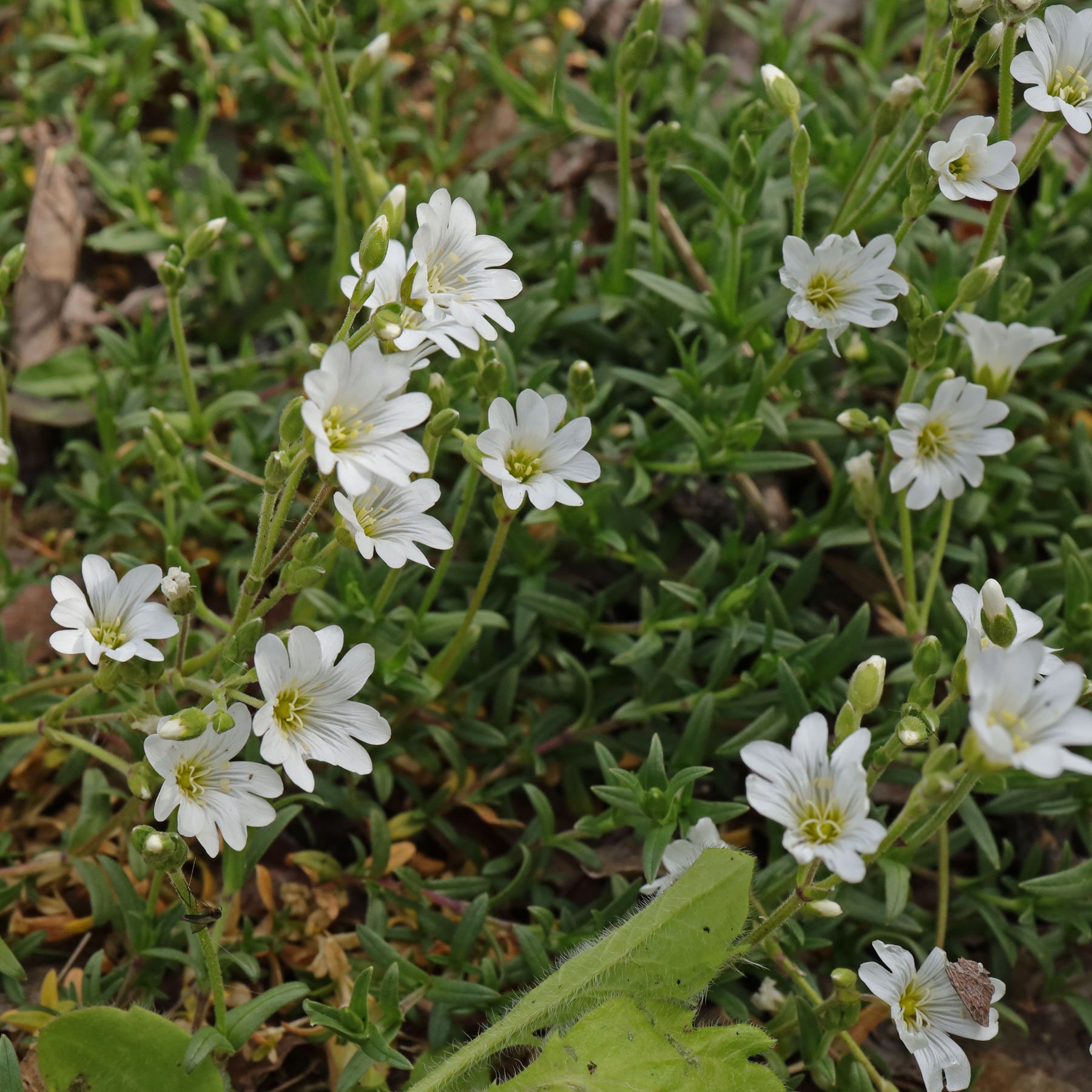
Céraiste des champs (Cerastium arvense ssp. arvense)
Cerastium arvense 'Compactum' Mouse-Ear Chickweed. Additive. Mouse-Ear Chickweed, native not invasive, grows into dull green mounds. Habit. Native not invasive, grows into dull green mounds . Size. 10 cm height . Foliage. Medium green leaves are lanceolate. Flowers. White flowers appear from May to June. Flowering time. IV-VI . Density.

Cerastium Arvense Oreja De Ratón Foto gratis en Pixabay
Discussion: Field Chickweed is the most attractive mouse-eared chickweed in Illinois (Cerastium) because it has the largest flowers. Being a perennial plant, rather than an annual plant (like most chickweeds), it is also easier to sustain in the garden. Field Chickweed (Cerastium arvense) has a history of taxonomic instability because of its variable characteristics across its range in North.

Cerastium arvense
Cerastium arvense, Linn. (var. oblongifolium, Holl.. Var. compactum, Hort., is hardy in S. E. Canada. CH. The above text is from the Standard Cyclopedia of Horticulture. It may be out of date, but still contains valuable and interesting information which can be incorporated into the remainder of the article. Click on "Collapse" in the header.
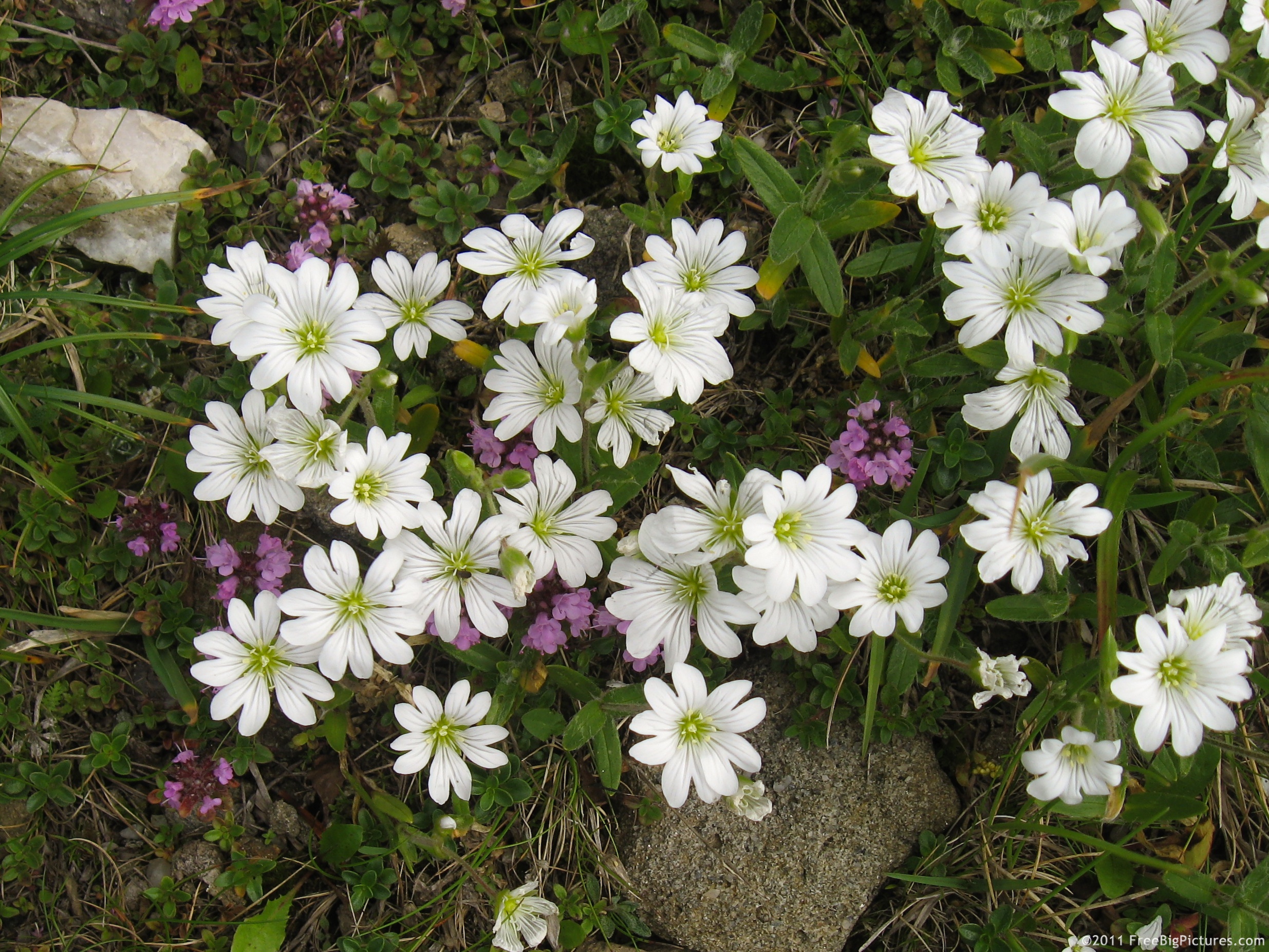
Cerastium Arvense
Cerastium arvense is a perennial herb that is native to California, and also found elsewhere in North America and beyond. This plant is available commercially. USDA PLANTS Profile (CEAR4) Calflora: Information on California plants for education, research and conservation, with data contributed by public and private institutions and individuals.

Cerastium arvense
Scientific Name and Common Name; Cerastium arvense L. ssp. arvense - field chickweed P: Cerastium arvense L. ssp. fuegianum (Hook. f.) Ugborogho - field chickweed P: Cerastium arvense L. ssp. maximum (Hollick & Britton) Ugborogho - field chickweed P: Cerastium arvense L. ssp. strictum (L.) Ugborogho - field chickweed P: Cerastium arvense L. ssp. velutinum (Raf.) Ugborogho - field chickweed P